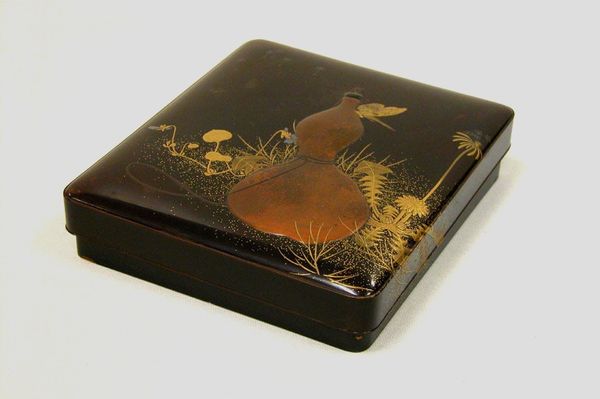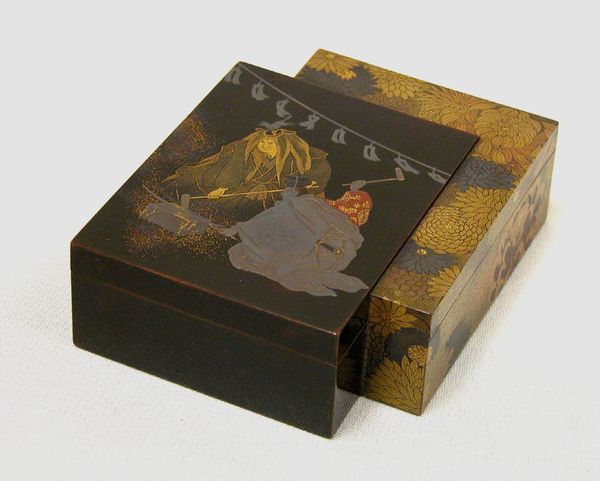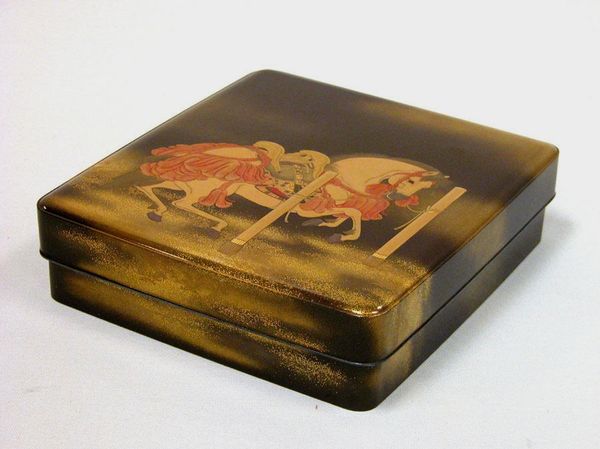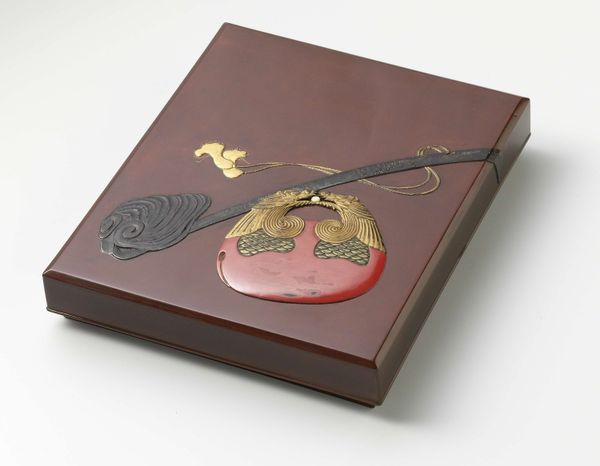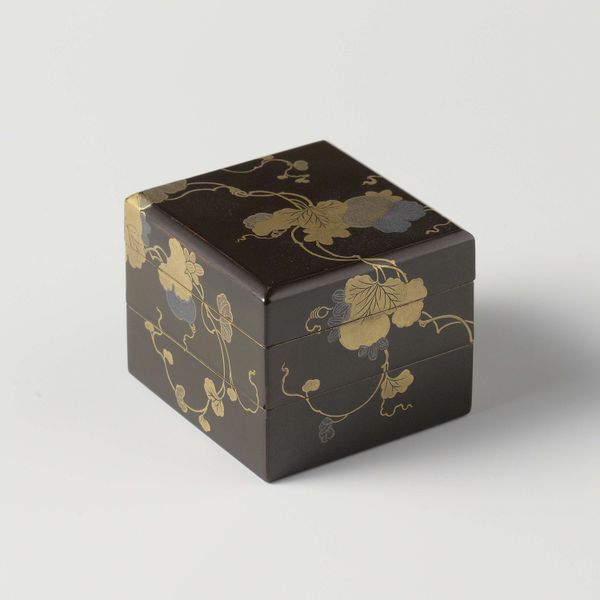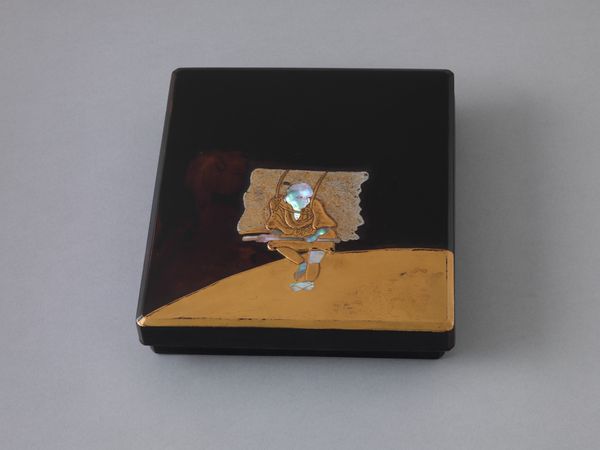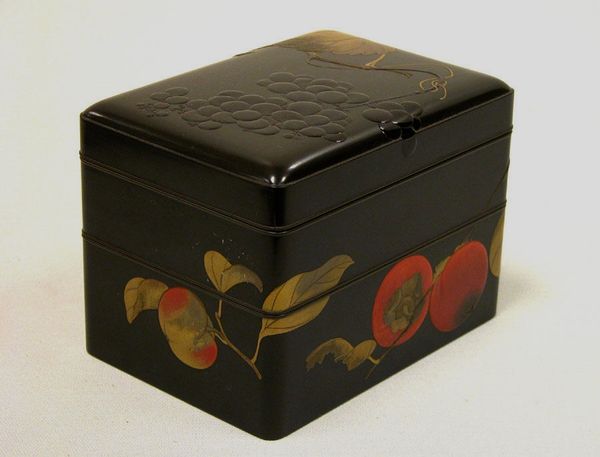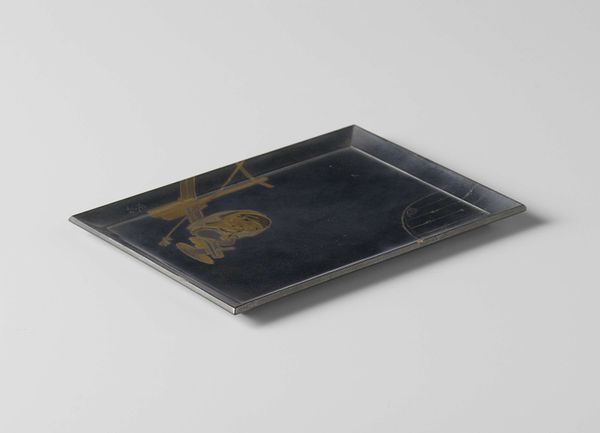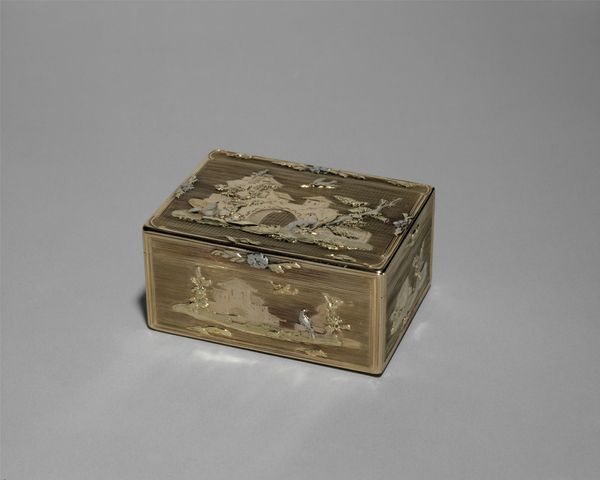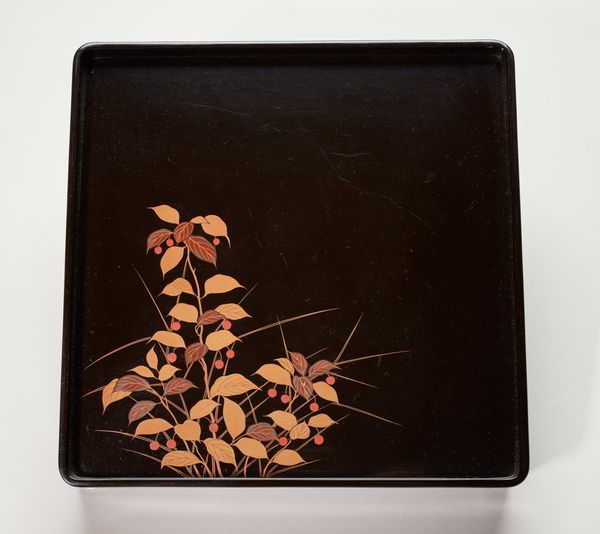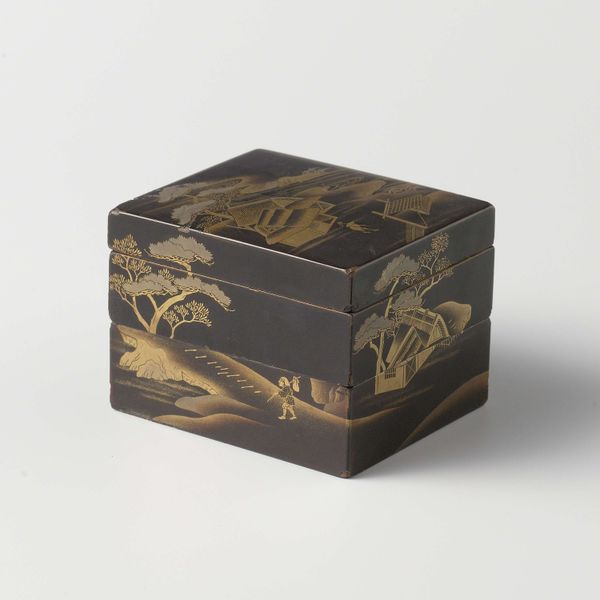
wood
#
asian-art
#
wood
#
decorative-art
Dimensions: H. 1 in. (2.5 cm); W. 3 7/8 in. (9.8 cm); D. 3 7/8 in. (9.8 cm)
Copyright: Public Domain
Curator: This beautiful object is a 19th-century Japanese box created by Shibata Zeshin. It resides here at the Metropolitan Museum of Art. Editor: The stark contrast of colors grabs you right away—the almost black lacquer with the brighter leaf colors… and those exquisitely placed leaf shapes provide visual rhythm. It makes it pop, don't you think? Curator: Indeed. Zeshin was renowned for his lacquer work, elevating it to a fine art. He had such unique insight to imbue simple imagery with deeper cultural meaning. For instance, the leaves, reminiscent of plantain, carry associations with healing, longevity, and sometimes even a contemplative withdrawal from the world. It is said to bring a sense of meditative calm to its owner. Editor: And then there's the meticulous craftsmanship in this box. Notice the precision of the lacquered surface and the texture on the sides? It provides an incredible tactile experience. Curator: Absolutely! Every detail whispers a story. We believe this was more than just a container; it was a symbolic piece, maybe even given as a treasured gift during an important stage of someone's life. Think about all the meanings in this image - shelter, growth, refuge. Editor: I’m struck by how such simple materials can yield such complex visual harmony. It reminds you how important details are. You need to work to notice. Curator: Right, in the traditional Japanese arts, there is this emphasis on less being more. With Zeshin’s art, he offers a door into thinking deeply about art as well as contemplating one's place in the world. Editor: This piece truly offers a study in simplicity, color theory, and craftsmanship—it's a jewel that encourages us to notice the art and depth around us.
Comments
No comments
Be the first to comment and join the conversation on the ultimate creative platform.
